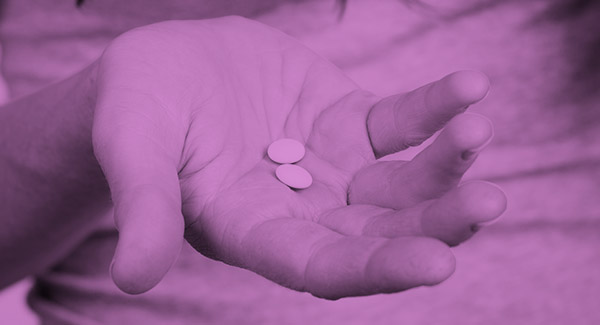Treatments Worth Trying for Fibromyalgia
Combine medication, self-care and lifestyle changes to manage fibromyalgia symptoms.
If you’re living with fibromyalgia, you already know that there is no cure for the pain and fatigue you often feel. Fortunately, with medications, self-care strategies and lifestyle modifications, living with fibromyalgia can be a little easier.
Medications
There are three FDA-approved drugs for use specifically as fibromyalgia treatments, and several used off-label (meaning it is used for but not FDA-approved for a condition). Though these drugs were originally developed for other conditions, they have also been proven effective for fibromyalgia.
- Anti-epileptics: Pregabalin (Lyrica) has shown benefits in relieving anxiety, some sleep problems and pain in people with fibromyalgia. Another medication, gabapentin (Neurontin) is sometimes used as a fibromyalgia treatment, but is not approved as such.
- Antidepressants: Duloxetine (Cymbalta) and milnacipran (Savella) are dual-acting norepinephrine and serotonin reuptake inhibitors that are approved for use in people with fibromyalgia. They raise levels of neurotransmitters known to prevent pain transmission. Other antidepressants that provide relief include amitryptiline hydrochloride (Elavil, Endep), fluoxetine (Prozac), paroxetine (Paxil) and sertraline (Zoloft), but they are not approved specifically for use with fibromyalgia.
- Analgesics, including tramadol (Ultracet, Ultram)
- Muscle relaxants, such as cylobenzaprine (Cycloflex, Flexeril)
- Fatigue medications, such as modafinil (Provigil)
Exercise
When you’re exhausted and in pain, exercise might be the last thing on your mind. But, physical activity is very beneficial for people with fibromyalgia. Before you start exercising, talk to your doctor about which activities are best for you.
“The goal is to start low and go slow, in terms of increasing physical activity,” says Leslie J. Crofford, MD, chief of rheumatology and women’s health at the University of Kentucky Hospital in Lexington. “We tell people to start at their capacity – no matter how brief that is.”
To pace your exercise, try to increase to a five-minute warm up; then 30 minutes of aerobic activity, such as walking; next a five-minute cool down; and finally a stretch. At that point, you’re ready to begin strength training.
In addition to pain relief, exercise has many other benefits for people with fibromyalgia.
“It may reduce fatigue, and it may boost confidence,” says Crofford. “People believe they can do other things if they can stick with an exercise program.”
“The goal is to start low and go slow, in terms of increasing physical activity,” says Leslie J. Crofford, MD, chief of rheumatology and women’s health at the University of Kentucky Hospital in Lexington. “We tell people to start at their capacity – no matter how brief that is.”
To pace your exercise, try to increase to a five-minute warm up; then 30 minutes of aerobic activity, such as walking; next a five-minute cool down; and finally a stretch. At that point, you’re ready to begin strength training.
In addition to pain relief, exercise has many other benefits for people with fibromyalgia.
“It may reduce fatigue, and it may boost confidence,” says Crofford. “People believe they can do other things if they can stick with an exercise program.”
Stress Reduction
Research shows that when a person in pain experiences stress, they feel more pain. In a 2004 study funded by the Arthritis Foundation and the National Institutes of Health (NIH), Laurence A. Bradley, PhD, a professor of medicine at the University of Alabama at Birmingham, and his colleagues compared the pain perception and neurologic responses of women with fibromyalgia to healthy women as they revisited stressful personal events.
Researchers applied heat to the women’s forearms. Even though all the women thought about equally stressful events, the fibromyalgia patients reported higher levels of pain from the heat.
“Teaching people to better cope with stressors may reduce the impact of those stressors on the perception of the unpleasantness they feel,” Bradley suggests.
Researchers applied heat to the women’s forearms. Even though all the women thought about equally stressful events, the fibromyalgia patients reported higher levels of pain from the heat.
“Teaching people to better cope with stressors may reduce the impact of those stressors on the perception of the unpleasantness they feel,” Bradley suggests.
Biofeedback
Biofeedback is a mind-body technique used to teach people how to control involuntary body functions such as heart rate, blood pressure and muscle clenching.
“Biofeedback equipment gives a patient information about specific physiological functions so they can work to control those functions,” says Mark D. Litt, PhD, a professor of behavioral sciences at the University of Connecticut Health Center in Farmington, and researcher of biofeedback.
“My patients are given information about the state of chewing muscles along their jaw joint, the ones that make your mouth clench,” says Litt. “Through electrodes attached to the body, a machine lets people know when their muscles clench. People then try ways to lower the muscle tension. Most people find they can do it if they can find a way to relax. For example, some people go into mini trances, and some people count in their heads.”
“Biofeedback equipment gives a patient information about specific physiological functions so they can work to control those functions,” says Mark D. Litt, PhD, a professor of behavioral sciences at the University of Connecticut Health Center in Farmington, and researcher of biofeedback.
“My patients are given information about the state of chewing muscles along their jaw joint, the ones that make your mouth clench,” says Litt. “Through electrodes attached to the body, a machine lets people know when their muscles clench. People then try ways to lower the muscle tension. Most people find they can do it if they can find a way to relax. For example, some people go into mini trances, and some people count in their heads.”
Lifestyle Changes
When living with fibromyalgia, look at your life holistically, considering all the ways fibromyalgia affects your life. Here are a few adjustments and treatments to consider:
- Where do you spend most of your time? Are you hunched over a computer or walking a lot in uncomfortable shoes? Change what you can to make yourself more comfortable.
- Are you getting enough good quality sleep? A lack of deep sleep is thought to contribute to the fatigue, concentration and short-term memory problems experienced by people with fibromyalgia. Consistency is key when it comes to sleep. Each night, follow the same bedtime ritual as a signal to your body that it’s time to sleep. Whether it’s taking a warm bath, reading a book, listening to music or doing a crossword puzzle, find the ritual that is right for you. If you still can’t get to sleep, consider talking to your doctor about sleep aids.
- Have you considered massage therapy? Some research suggests that massage can assist in fibromyalgia pain management. Researchers from the Touch Research Institute at the University Of Miami School of Medicine found that massage therapy provided multiple benefits, including improved sleep, decreased joint pain and lowered stress hormones.
- Have you given acupuncture a shot? Some patients find relief from acupuncture. Several studies have shown that people who received true acupuncture showed greater improvements in anxiety and fatigue than those who received a fake procedure.
The Right Plan for You
No matter what you try, the most important thing is to find a plan that works for you, according to Stephen T. Wegener, PhD, an associate professor in the department of physical medicine and rehabilitation at The Johns Hopkins School of Medicine in Baltimore.
“It may be that different treatments work for different people,” Wegener says. “There’s considerable literature that [shows] if people choose and get the treatment they want, they tend to have better outcomes.”
“It may be that different treatments work for different people,” Wegener says. “There’s considerable literature that [shows] if people choose and get the treatment they want, they tend to have better outcomes.”
Hello,

Stay in the Know. Live in the Yes.
Get involved with the arthritis community. Tell us a little about yourself and, based on your interests, you’ll receive emails packed with the latest information and resources to live your best life and connect with others.



